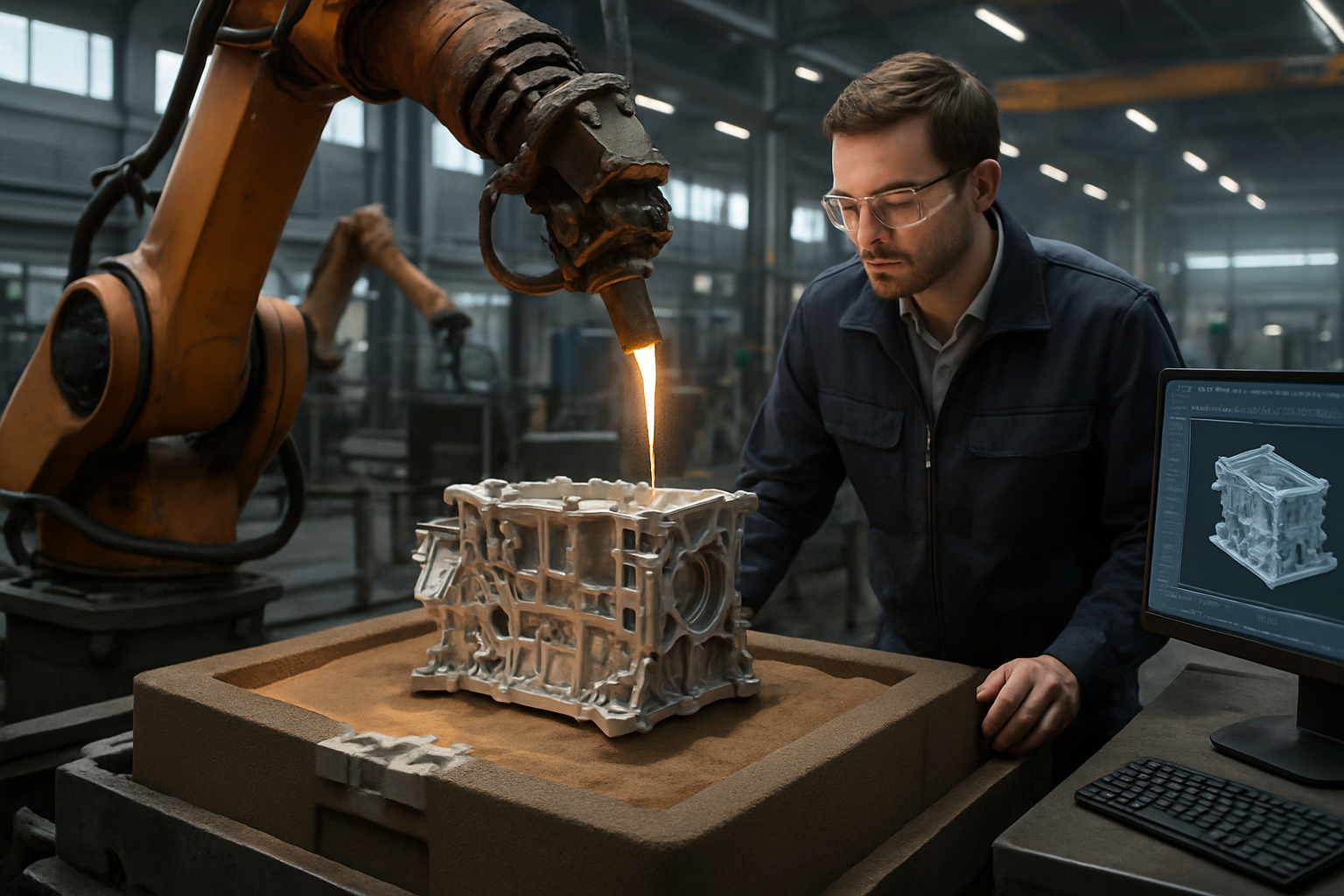Automotive Sand Casting: Shaping the Future of Car Manufacturing
The rhythmic hum of machinery fills the air as molten metal cascades into intricate sand molds, taking shape to become the backbone of tomorrow's vehicles. This age-old technique, known as automotive sand casting, is experiencing a renaissance in modern car manufacturing. As we delve into the world of sand casting, we'll explore how this traditional method is being reimagined to meet the demands of 21st-century automotive production.

The process begins with a pattern, typically made of wood, metal, or plastic, which is used to create the mold cavity in the sand. The sand, a special mixture of silica sand, clay, and other additives, is packed around the pattern to form the mold. Once the pattern is removed, molten metal is poured into the cavity, allowed to cool, and then the sand is broken away to reveal the finished part.
Advancements in Sand Composition and Mold Design
Recent years have seen significant advancements in sand casting technology, particularly in the composition of the sand itself. Engineers have developed new binder systems that improve mold strength and surface finish, resulting in higher quality castings. These innovations allow for more intricate designs and tighter tolerances, essential for modern automotive components.
Mold design has also undergone a transformation with the integration of computer-aided design (CAD) and simulation software. These tools enable engineers to optimize mold geometry, gating systems, and cooling channels, reducing defects and improving overall casting quality. The result is a more efficient process that can produce parts with enhanced mechanical properties and reduced waste.
Precision and Automation in the Casting Process
Automation has revolutionized the sand casting process in automotive manufacturing. Robotic systems now handle many aspects of mold preparation, pouring, and part extraction, ensuring consistency and reducing labor costs. Advanced sensors and control systems monitor critical parameters such as temperature, pouring rate, and cooling time, allowing for real-time adjustments to optimize each casting.
This level of precision and control has expanded the range of components that can be effectively sand cast. From engine blocks and cylinder heads to transmission cases and suspension components, sand casting is now capable of producing parts with complexity and accuracy that rival other manufacturing methods.
Environmental Considerations and Sustainability
As the automotive industry faces increasing pressure to reduce its environmental impact, sand casting is adapting to meet these challenges. Modern foundries are implementing closed-loop systems for sand reclamation, significantly reducing waste and the need for new raw materials. Water-based coatings and inorganic binders are replacing traditional petroleum-based products, lowering emissions and improving workplace safety.
Furthermore, the ability to cast lightweight alloys, such as aluminum and magnesium, aligns with the industry’s push for lighter, more fuel-efficient vehicles. This shift not only reduces the environmental impact of the vehicles themselves but also of the manufacturing process, as these materials often require less energy to melt and cast compared to traditional iron and steel.
Integration with Advanced Manufacturing Techniques
The future of automotive sand casting lies in its integration with other advanced manufacturing techniques. Additive manufacturing, or 3D printing, is being used to create highly complex sand molds and cores that would be impossible to produce through traditional methods. This hybrid approach allows for the production of parts with internal channels and structures that optimize weight and performance.
Additionally, the combination of sand casting with subsequent machining operations, often performed by CNC equipment, allows for the production of near-net-shape components. This reduces material waste and energy consumption compared to starting with solid billets of metal.
The Road Ahead for Automotive Sand Casting
As we look to the future, automotive sand casting continues to evolve. Research into new alloys and composite materials compatible with the sand casting process promises to yield components with even greater strength-to-weight ratios and improved performance characteristics. The integration of artificial intelligence and machine learning algorithms into the casting process will further enhance quality control and process optimization.
The versatility and cost-effectiveness of sand casting ensure its place in automotive manufacturing for years to come. From prototyping to high-volume production, this time-tested technique continues to adapt and thrive, shaping the vehicles of tomorrow with a perfect blend of tradition and innovation.
In an industry driven by cutting-edge technology, it’s fascinating to see how an ancient craft like sand casting remains not just relevant, but at the forefront of automotive manufacturing. As cars become more advanced, so too does the process that forms their very foundations, proving that sometimes the oldest techniques can be the most innovative when reimagined for the modern age.





